- Learning time
- 20 minutes
- First play time
- 90 minutes
Luzon Rails
Designed by: Robin David
The island of Luzon – part of the Philippines – once had a large and prosperous railway network. In Luzon Rails, the players represent investors in the railroad companies, seeking to end the game as the investor with the fattest wallet.
The board shows Luzon itself broken into hexes, across which you’ll build track on behalf of the five companies: for shorthand, we’ll refer to them as red, pink, yellow, green and brown. You begin the game with 25 pesos from the bank, and building track has a cost: 1 peso for a standard hex, 2 pesos for a mountain hex. Only one track can be in a mountain space; standard spaces can be shared by multiple tracks, although it does force the cost of building upwards.
But you don’t pay for the track-building yourself. Instead, before the game starts players bid for shares in each of the five companies. The winning bidder takes a share and pays their bid into the company itself: it can now be spent on building track! As investors, your goal is to increase the value of the companies you hold shares in, and you do so by taking actions.
You begin with two action cards in hand, and in each of the game’s six rounds, seven more are added to the display on the board. On your turn you simply take one – from the display, or your hand – and play one of the actions on it. Building track is simple – assuming the company has the cash to do so, you can pay to add company cubes on the board. If you go to a production space, the value of the company – tracked by dice on a dividend track – increases by one, and the face-value of the die increases by one as well. If you build into a port, the company value increases by the number of pips on the die. So connecting to production spaces before ports makes sense, as you really want that die as high up the dividend track as possible.
The other actions are even simpler: Grant a company 5 pesos from the bank, auction throws another share out for everyone to bid over, and develop adds a development token to any track you’ve invested in where it passes through a development hex. Doing so means you can either throw 3 pesos straight into the company coffers – to later build track with – or push the company value up three spaces on the dividend track.
Once all the action cards in the display have been used, the round instantly ends and companies pay out according to their dividend value: splitting between all players with shares, rounding down if necessary. For instance, if the company value is 20;,you have two shares and I have one, you’ll be paid 12 pesos and I’d get 6 pesos with the remainder staying in the bank.
That’s more or less the entire game, although there are few ways it can end early – if three companies run out of cubes, three companies have sold all their shares, or only three or less development tokens remain. The player with the most cash at the end is the winner!
The guru's verdict
-
Take That!
Take That!
There's no theft, combat, or arbitrary events that surprise. But certainly the auctioning of shares and the placement of track give Luzon Rails a feisty air - no gentle route-building here, oh no.
-
Fidget Factor!
Fidget Factor!
Low to moderate, depending on the game state, what cards are available, and who's playing!
-
Brain Burn!
Brain Burn!
The rules are almost all out there on the board; it's not a heavy game in that regard. Making the right choices can be a little trickier.
-
Again Again!
Again Again!
Cards come out randomly but what makes each visit to Luzon Rails distinct is the player input: bidding just one peso higher for a share can have ramifications down the line for everyone. If you wish, you can add special company cards that give the five companies a distinct identity by having a special ability that applies to that company only.

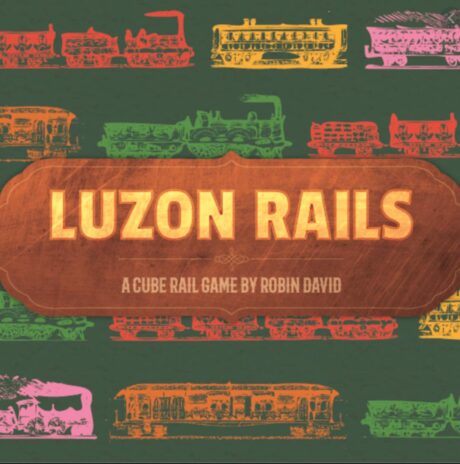
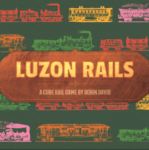
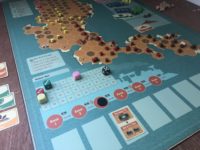
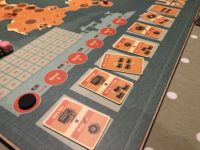


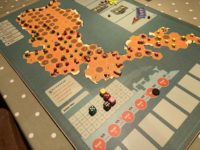






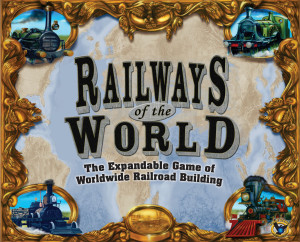
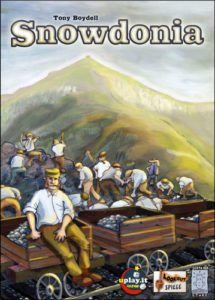
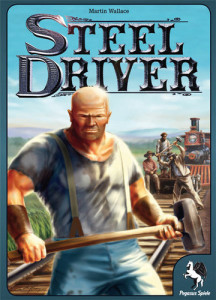
Sam says
I really enjoy Luzon Rails; it's one of a game genre I don't know a huge amount about ([simple_tooltip content='generally, players are investors rather than owners']cube rails[/simple_tooltip]) but I like the speed it plays at, the ease of learning - most of the rules are out there on the board - and the presentation. Most of all I like how the ever-shifting dynamics between the players define the experience more than 'building track' or 'buying shares' does. Who's got the most cash? Who has the most shares? If I have two yellow shares and the yellow company value is good, how much am I willing to pay to stop someone else getting that third share? If I want in on the red company, should I bid exactly what that share is currently worth, or pay a little more in the hope that I have time to improve the company value? The late-game squeeze for space on the board as everyone scrabbles to get the maximum juice out of their investments lends the game a tense finale too - along with the potential for surprise with any action cards still in someone's hand.